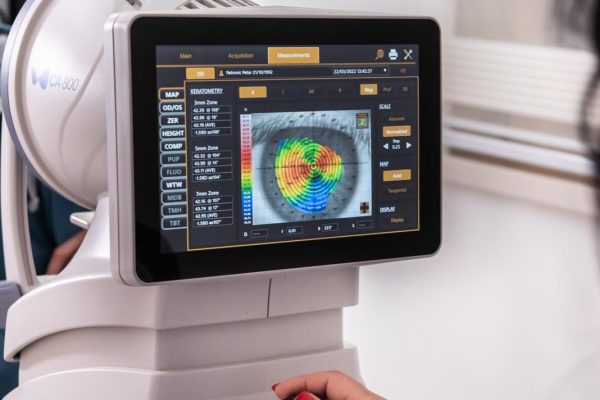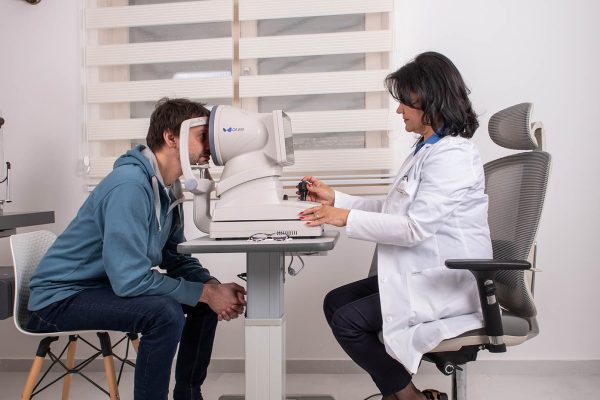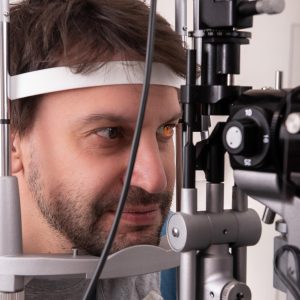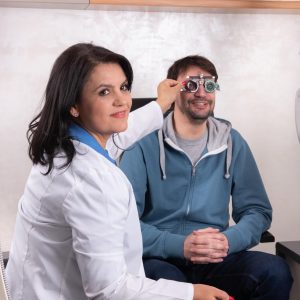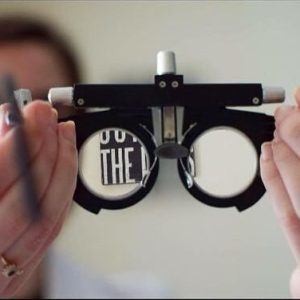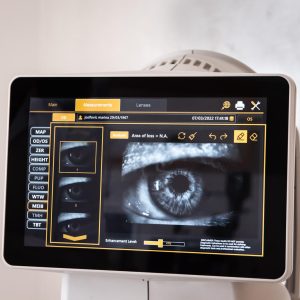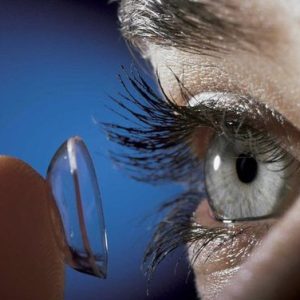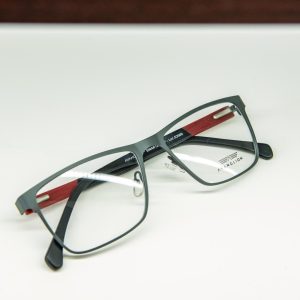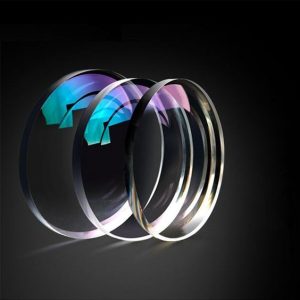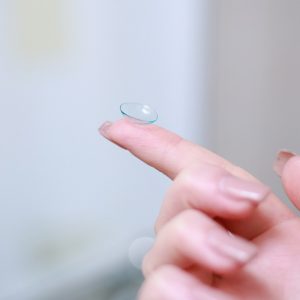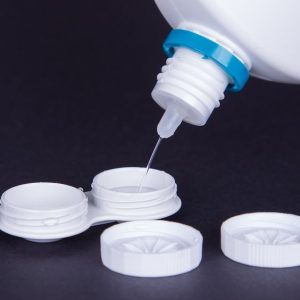Corneal topography
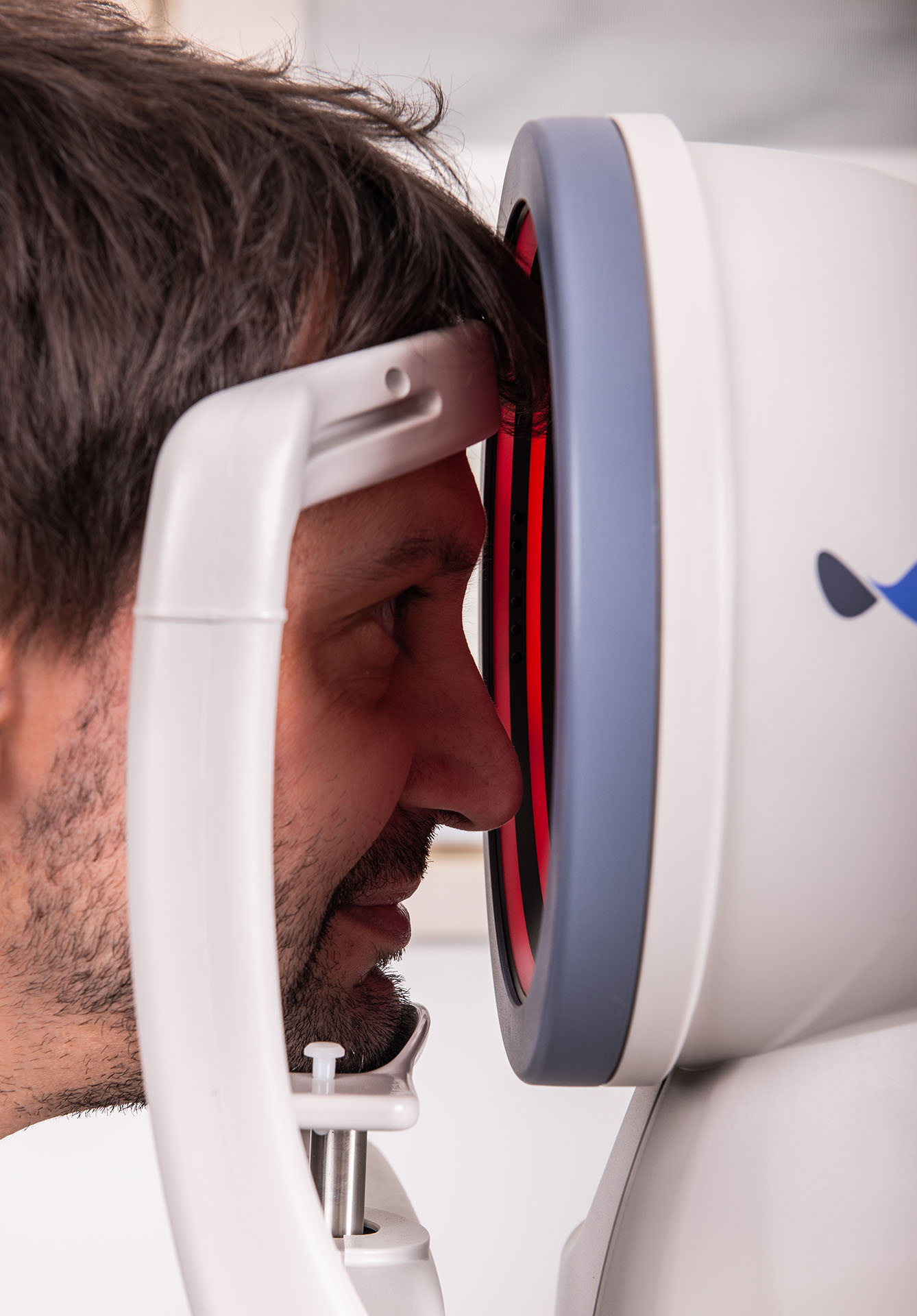
What is corneal topography and how does it work?
Topography is a map of the front surface of the cornea. This is a simple diagnostic method based on the fact that the tear film on the surface of the cornea acts like a mirror. The basis of this method is the Placido disc technology. Even at the end of the 1800s, doctors used a reflected image on the cornea, a target with rings, as an aid in the diagnosis of corneal irregularities. Today’s devices measure the shape of the cornea very precisely. Each corneal image taken is analyzed in detail, and the data is presented in maps. The combined maps provide a detailed picture of corneal curvature, refractive potential, shape and optical quality of the eye surface. Data are presented in different colors. Warm colors represent steeper zones, and colder ones represent flattening zones.
The importance of the cornea in the preservation of vision and diagnostics
The cornea is of great importance for vision. It protects the eye from external influences, but it must be transparent for light to pass through and enter the eye unhindered. All protrusions on the cornea lead to uneven refraction of light. Based on the topography, the diagnosis of numerous conditions and diseases is established, including astigmatism and keratoconus.
This finding is also of great importance for consultation regarding the method of refractive error correction. The examination is performed without direct contact. After placing the chin and forehead on the stop on the device, the patient should fix the light point for a few seconds.

